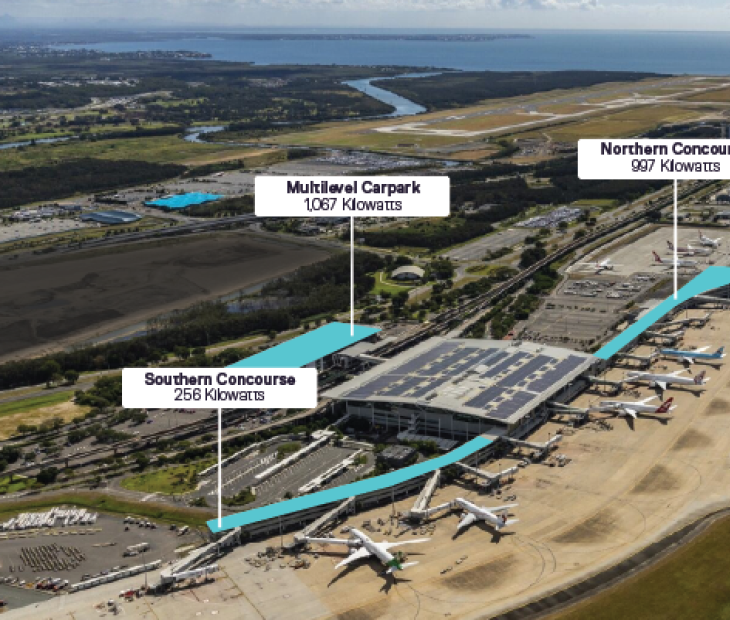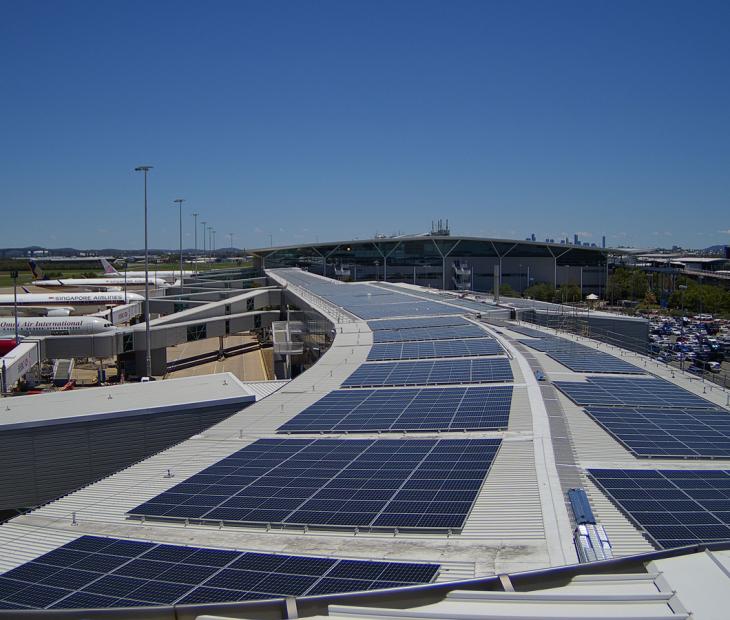Towards the end of 2023, we started installing an additional 5,000 solar panels to our International Terminal roof and car park, growing our existing our solar network to over 33,000+ panels.

Brisbane Airport remains committed to renewable energy across all areas of the airport and with a precinct that is operational, 24 hours a day, 365 days a year, the power required to light, heat, and cool each of the facilities is significant. As part of our ongoing sustainability strategy, we are embarking on a project to expand our solar energy assets at the International Terminal. This includes an additional 5,000 panels, producing 3.2 Gw/h per year, covering 7% of the airport's total energy requirements.

- Solar panel rooftop works and installation on the northern concourse of the International Terminal between Gates 75 to 79 and the Emirates lounge rooftop are complete.
- Works are now complete on the southern concourse International Terminal roof between Gates 82 to 86.
- Installation on the International Terminal Multi-Level Car Park rooftop is currently underway.
- In FY23 onsite solar energy generation accounts for 17% of supply.
- Our Rooftop Solar is the largest panel installation at an Australian airport and the largest commercial system in the Southern Hemisphere.
- Future solar panel projects across the airport precinct buildings are underway or planned to further reduce our carbon emissions.
In 2018, Brisbane Airport invested $11 million in a major solar project across six sites on the airport. This project added 18,000+ panels to the airport precinct.
